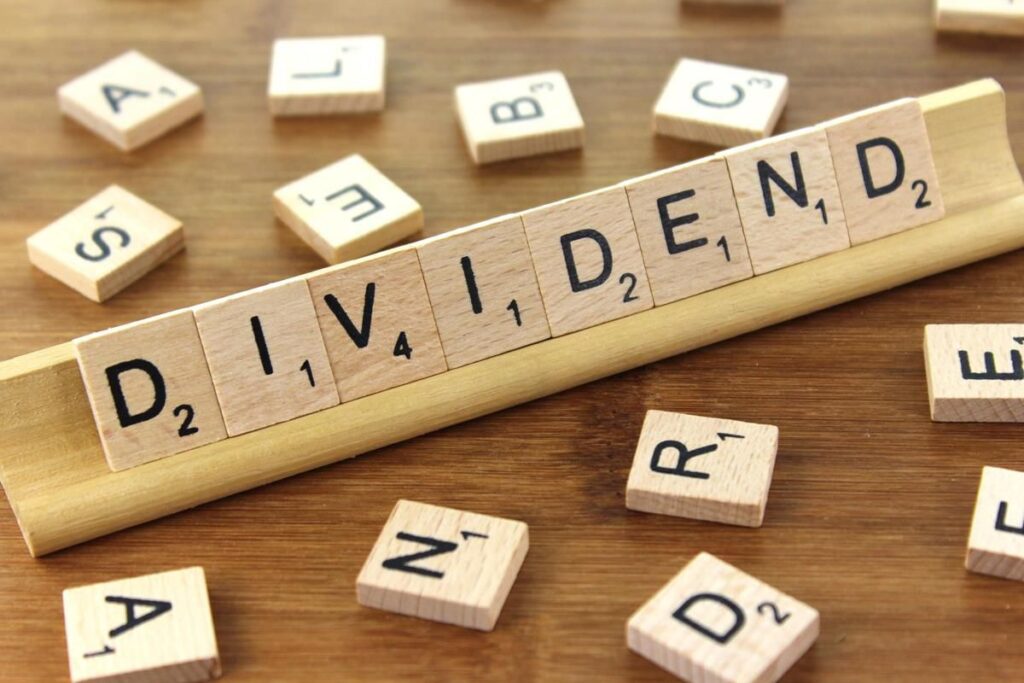Positivity is a lifestyle, BoomPositive advises, and one of the best ways to spread that positivity is through words. Positive adjectives that start with D, for example, include disciplined, desirable, dandy, and delightful.When considering stock returns, the D word—dividends—is very important because dividend payouts on a stock often provide a substantial chunk of that stock’s total return. True, dividends are not guaranteed, but the fact is, companies are reluctant to send a message of non-success by cutting their dividend payouts.
What, exactly, is a dividend, and what makes such a Distribution so Desirable and Delightful?
When a company generates profits, the leadership typically chooses among several ways to use that money (other than just keeping it in cash reserves). They may decide, for example, to pay off debt, to devote that money to new product development, to expanding into new territory, or—they may decide to distribute all or part of it to the shareholders in the form of dividends. The decision of whether to approve a dividend is usually made quarterly by the company’s board of directors. When an increase in the dividend is approved, that is a signal the company has confidence in its growth going forward.
In essence, owning dividend-paying stocks can allow investors to profit in two different ways. In addition to potential growth in the price of the stock itself, the recurring income can provide a second benefit. Even during periods when the price of the stock is not increasing, the dividend payout can provide some stability. What’s more, dividends that meet certain IRS standards are generally taxed at the long-term capital gains tax rate rather than as ordinary income.
To some degree, dividends can function like a thermometer, confirming that the company’s financial “temperature” is stable. To pay out a dividend, the company has to have the cash on hand. As a wise man once said, “You can’t fake dividends.”
While retired investors often depend on the regular quarterly income flow from stock dividends, investors of all ages need to know that dividends have been a very important part of a stock portfolio’s total return.According to data from Hartford Funds, for the years between1930 and 2020, dividends have amazingly accounted for some 41% of the S&P 500 Index’s total return! To reap the benefits of dividend income, investors should look to identify two factors:
- Does the company have a history of paying dividends?
- Does the company appear to be in a position to increase their dividend in the future?
Dividend Aristocrats
One particular group of stocks (there are now 65 of these in the world) has been given the name Dividend Aristocrats. These are companies in the Standard & Poor’s 500 stock index that have raised their dividends every year for at least 25 consecutive years. Aristocrats have a minimum market capitalization of $3 billion and average at least $5 million in daily share trading.
Here are just a few companies you might recognize from the 2020 Dividend Aristocrats list: 3M, Aflac, AT&T, Caterpillar, Clorox, Coca-Cola, Colgate-Palmolive, Exxon Mobil, Johnson & Johnson, Lowe’s, McDonald’s, PepsiCo, Proctor & Gamble, Sherwin-Williams, and Target.
“Evidence of profitability in the form of a dividend check can help investors sleep easily,” as Invest opediaputs it. It’s one thing to have profits on paper, but “profits that produce cash dividends are another thing entirely.”
One of the best ways to spread positivity is through words. For investors, when it comes to positive adjectives that start with D, dividends can be Delightful and Dandy indeed!

